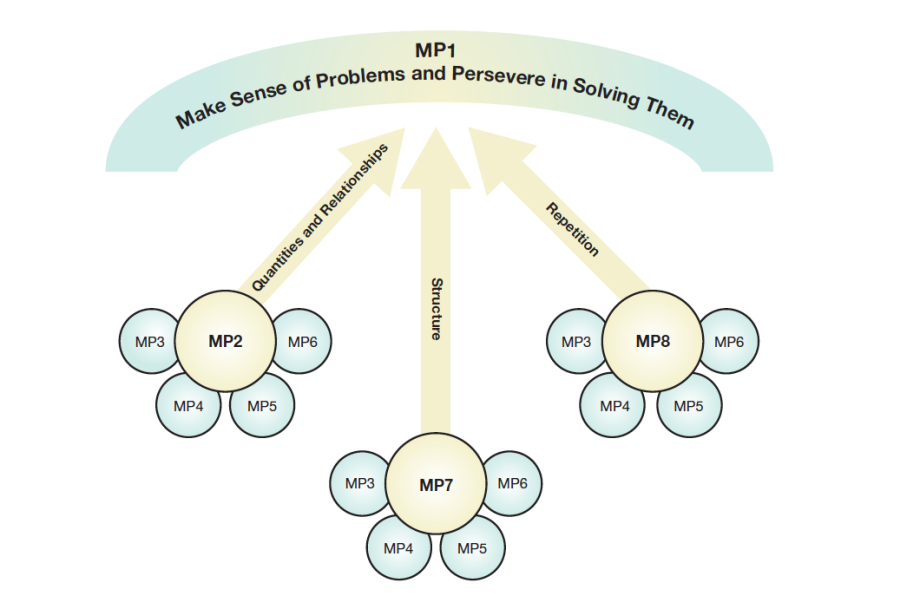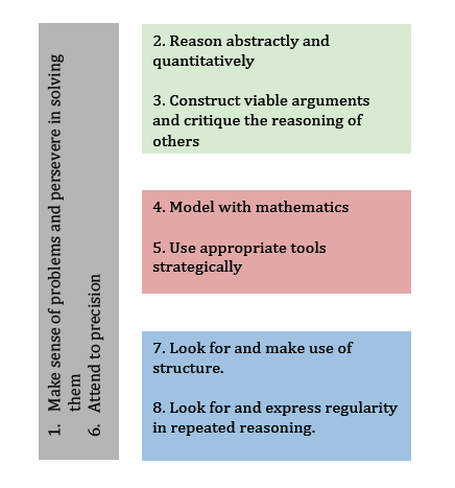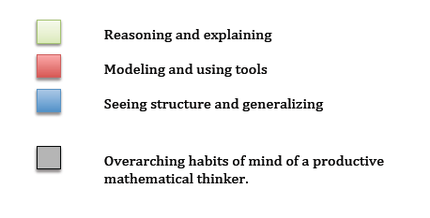The Standards for Mathematical Practice describe varieties of expertise that mathematics educators at all levels should seek to develop in their students.
Below are links to translations of the Common Core State Standards Standards for Mathematical Practice.
SMP: Spanish translation ......................... Traducción al español (access alternative Spanish translations)
SMP: Chinese translation ........................ 翻译成中国
SMP: Filipino translation .......................... Pagsasalin sa filipino
SMP: Armenian translation ..................... Հայերեն թարգմանությամբ
SMP: Korean translation ......................... 한국어 번역
Student-Friendly Standards for Mathematical Practice
The Jordan School District in Utah has produced a series of posters explaining the Math Practice Standards in student-friendly language for grades K–6.
You can download the posters by clicking on each standard number:
Standard 1: Make Sense of Problems and Persevere in Solving Them
Standard 2: Reason Abstractly and Quantitatively
Standard 3: Construct Viable Arguments and Critique the Reasoning of Others
Standard 4: Model with Mathematics
Standard 5: Use Appropriate Tools Strategically
Standard 6: Attend to Precision
Standard 7: Look for and Make Use of Structure
Standard 8: Look for and Express Regularity in Repeated Reasoning
The younger grade versions of the SMP in student-friendly language are also available in Spanish and Chinese, courtesy of the Jordan School District in Utah.
Standards 1–8: K–6 Spanish
Standards 1–4: K–6 Chinese
Standards 5–8: K–6 Chinese
Standards 1–8 by grade level (opens Google Drive folder)
Learn More about the SMPs
- View the full text of the Mathematical Practices with videos and tasks that illustrate the practices. (Illustrative Mathematics)
- Access the ADA Compliant Version of the Common Core State Standards for Mathematics (Council of Chief State School Officers)
- View a Parent's Guide to the Standards for Mathematical Practice
Grouping the SMPs

Another Way of Grouping the SMPs
This diagram shows another way of grouping the Practice Standards and comes from Bill McCallum, one of the authors of the CCSS-M. Read more in the Standards of Mathematical Practice, University of Arizona.


Other Resources
Other Resources
Inside Mathematics (K–12) has correlated the mathematical practice standards to excerpts of mathematics lessons with multiple examples of successful strategies to launch and sustain these practices.
This video from Making the Case introduces Common Core Standard #3 for Mathematical Practice: Construct viable arguments and critique the reasoning of others, and provides context about implementing the standard in your classroom practice. Reflections from teachers and from math education experts are also included.
View the overlapping standards for Math, Science and Language Arts.
This page was last updated on June 21, 2023

